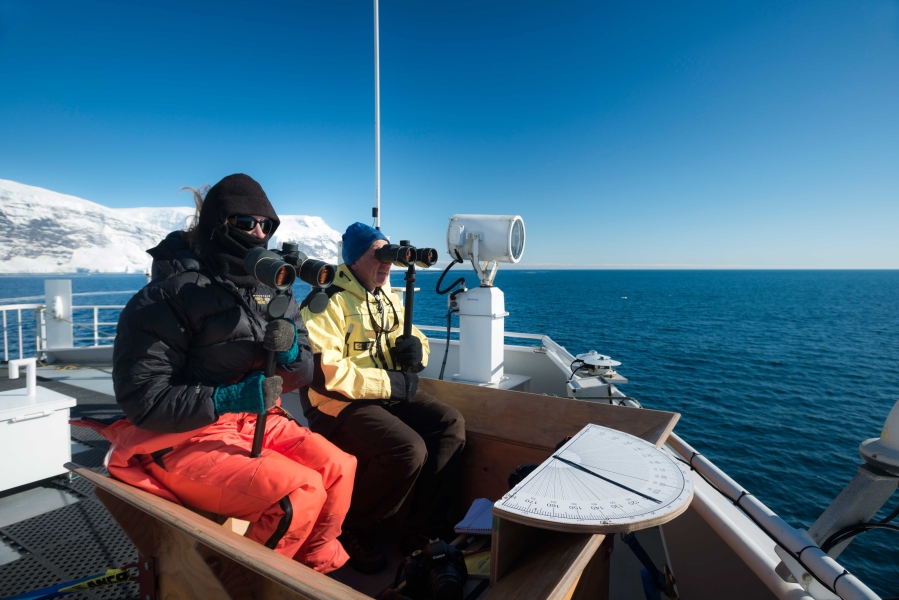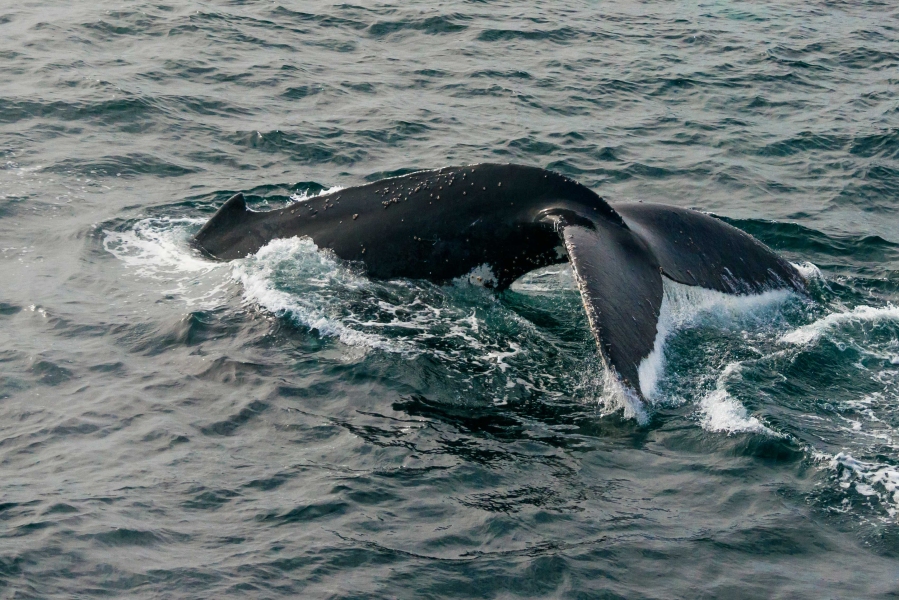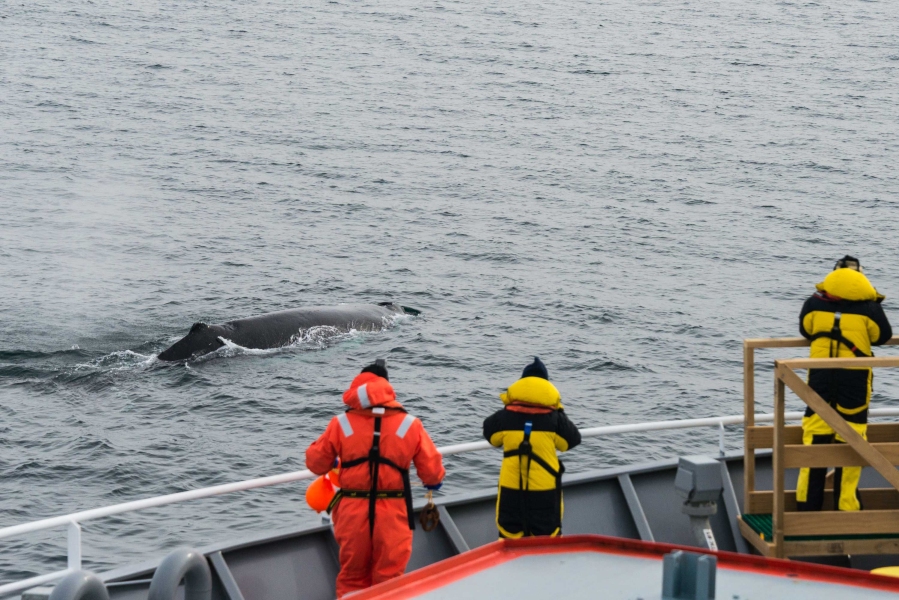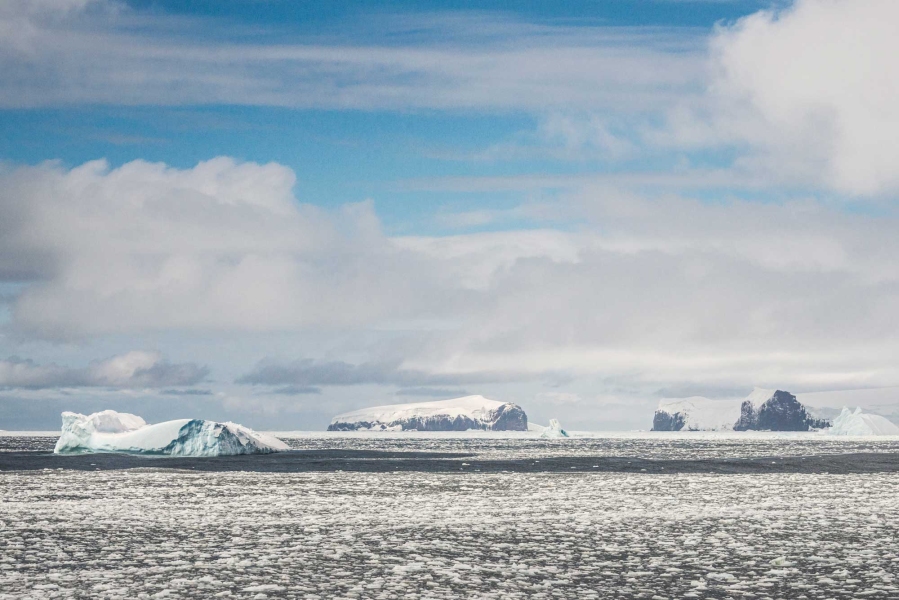The first objective of the New Zealand- Australia Antarctic Ecosystems Voyage was successfully achieved with the completion of the research at the Balleny Islands.
The Balleny Islands are a 160 km island chain in the northern Ross Sea. The group consists of three large (Buckle, Young, and Sturge) and three smaller islands. All the islands are volcanic in origin and are thickly covered with ice.
The region around the Balleny Islands is a known foraging area for humpback whales and objective 1 of the voyage aimed to determine why the Balleny Islands are such a popular spot for humpback whales. Food must be abundant, as they migrate thousands of kilometres from their winter breeding grounds in the tropical Pacific to these icy southern waters (and back again) every summer. In this case, ‘food’ turned out to be krill – a small (5 cm long) crustacean that is incredibly abundant in Antarctic waters.
The Balleny Islands (together with Scott Island) are the only oceanic islands on this side of Antarctica, making them distinctive from any neighbouring areas. Their position is far enough from the Antarctic mainland to be directly in the path of circumpolar ocean currents. Consequently these islands are likely to create upwelling, which tend to bring nutrient-rich deep water closer to the surface, which in turn makes the area biologically very productive.
Conducting the research
Over the past 3 days, scientists onboard Tangaroa have run a zig-zag pattern of survey lines around the Balleny Islands to provide estimates of whale, krill and fish abundance. Continuous underway measurements of oceanographic and atmospheric variables were also made, and experiments were carried out onboard to assess the biological productivity of the water. Almost all of the 35 planned lines were successfully completed, although it was impossible to cover the northwestern part of Young Island (the northernmost of the three main islands) because of sea ice.
Numerous humpback whales were observed, particularly around Buckle Island (the middle island). NIWA marine mammal scientist Dr Kim Goetz said there were about 48 humpback whale sightings and a total of 106 individuals around the surveyed portion of the Balleny Islands. Other sightings included minke and fin whales in addition to two blue whales seen while transiting from Sturge to Buckle Island.
The fisheries acoustics team, led by NIWA’s Dr Richard O’Driscoll and Dr Martin Cox from the Australian Antarctic Division (AAD) used a suite of sophisticated echosounders to measure krill abundance. Transducers mounted on the hull of Tangaroa send out pulses of sound (pings) into the water. Each ping is very high frequency, outside the range of human hearing, but can travel hundreds of metres through water. Along the way, the sound is reflected by the seabed and also objects in the water like fish and plankton. By listening to the reflecting sound (backscatter), the echosounder can tell how far away the objects are and whether they are a strong or weak target.
On Tangaroa information from five different echosounders with different frequencies of sound are compared to help work out what sort of animals are below. Dr O’Driscoll says that “the difference between using one frequency of sound and using five is like the difference between black-and-white and colour television. With colour television you get a much better picture of what is down there”. On this voyage Dr Cox has brought along some new echosounders that simultaneously transmit across a broad range of frequencies. These “chirp” echosounders are the latest technology and Dr O’Driscoll hopes they “might be like high-definition colour TV – with even more power to discriminate between species”.
Even with all this technology onboard, acoustics scientists are sometimes not sure what they are seeing on their screens, so a midwater trawl is used to catch the fish or krill to positively identify them.
What was discovered
Data from a previous voyage in 2010 suggested that Balleny humpback whales were feeding on small fish as well as krill. However, this year’s work did not detect any big schools of fish during the acoustic survey, and very few fish were caught in any of the nine midwater trawls carried out in the area. The main species in the catch were krill and jellyfish, with some grenadiers (rattails), small notothenids (Antarctic cods), and myctophids (lanternfish) closer to the seabed – and too deep for feeding humpback whales.
Confirming what a whale is eating is tricky. The method used to do this is stable isotope analysis of biopsy samples. Taking a biopsy from a whale involves shooting a small dart into it, which collects a small sample of skin and tissue. The dart then bounces off the whale and is retrieved for later analysis. NIWA scientist Dr Sarah Bury says that each tiny sample can be analysed to determine its stable isotope composition. If the composition of the prey is also known then this “chemical signature” provides a good indication of the whale’s favourite food. Biopsy samples were taken from seven humpback whales on 7 February to help determine whether isotope values (and therefore likely prey composition) in this survey were different to those in 2010.
Retrieving the biopsy darts showed some Australian ingenuity. It is difficult to manoeuvre a 70 m research vessel to pick up a tiny floating dart, so the team from AAD have built remote-powered catamarans which can be deployed from the vessel to go and pick up the darts. One of the catamarans, nicknamed “Mini-rover” incorporates a zimmer-frame and a shopping basket in its design, and has become a crew favourite.




